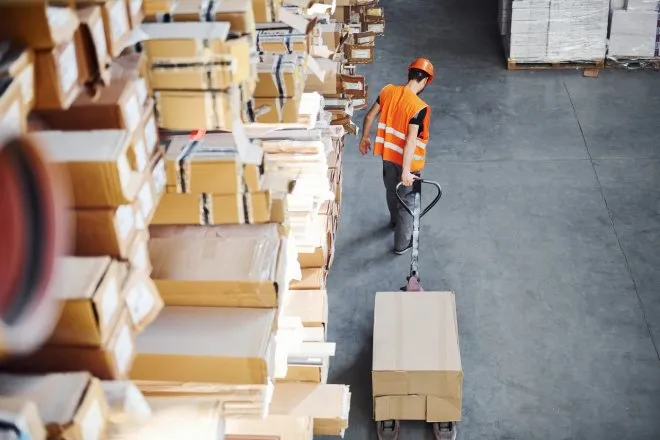
Different Lighting Features Your Warehouse Should Have
©
Warehouse lighting is more than just flipping a switch. It directly affects safety and productivity in ways you might not initially consider. Proper illumination can reduce accidents, enhance workflow efficiency, and contribute to the mental well-being of employees. Here, we’re taking these ideas one step further and discussing different lighting features your warehouse should have to ensure an efficient and safe workplace.
Warehouse Lighting for Safety and Productivity
Lighting plays a crucial role in maintaining safety and enhancing productivity in a warehouse environment. Poor lighting conditions lead to increased accidents and reduce overall operational efficiency. In contrast, well-lit spaces help workers see clearly and enable them to perform tasks more accurately.
Effective lighting reduces the occurrence of errors during picking, packing, and shipping operations, which translates to fewer returns and higher customer satisfaction. Moreover, proper lighting contributes to energy savings and cost reductions while maintaining a safe working environment. Thus, investing in effective lighting solutions is a safety measure and a productivity booster.
LED Lighting: The Efficiency Upgrade
LED lighting is the go-to option for modern warehouse illumination. Its energy efficiency and long lifespan make it an economical choice for large spaces. Unlike traditional lighting systems, LEDs provide consistent brightness without flickering and make sure all areas have adequate illumination.
LED lights are also environmentally friendly, consuming less power and generating less heat compared to older lighting systems. This makes them suitable for warehouses where temperature control is vital. A safety revolution with virtual LED signs is paving the way for many warehouses seeking cost savings, increased safety, and worthwhile investments.
High Bay Lighting: Illuminating Large Spaces
High Bay lighting is specific for spaces with high ceilings, such as warehouses. These lights provide powerful illumination and guarantee that even the most distant corners are well-lit. This is particularly important in preventing accidents and ensuring that workers can always see what they are doing.
The high placement of these lights reduces shadows and glare and creates a more comfortable working environment. This is crucial for tasks that require precision, such as inspecting products or reading labels. High Bay lights often come with reflectors to direct light exactly where it’s necessary, further maximizing their efficiency.
Motion Sensor Lights: Energy Efficiency and Safety
Motion sensor lighting adds a layer of intelligence to warehouse illumination. These systems automatically adjust lighting based on the presence of people and make sure the lights are only on when needed. This saves energy and extends the lifespan of the lighting fixtures.
In areas with low traffic, motion sensor lights can significantly reduce energy consumption without compromising safety. They ensure that walkways and storage areas are lit only when someone is present, which minimizes wasted energy. This feature is particularly useful in large warehouses where certain sections have reduced activity.
Proper lighting is essential for any warehouse aiming to improve safety and productivity. From LED and High Bay lighting to motion sensor systems, each feature offers unique benefits that contribute to a safer and more efficient work environment. Understanding the different lighting features your warehouse should have is the first step toward a safer, more productive, and efficient workplace.

















